Hero of the Soviet Union
| Hero of the Soviet Union | |
|---|---|
 Gold star medal of the Hero of the Soviet Union | |
|
Awarded by the | |
| Type | Honorary title |
| Eligibility | Soviet and foreign citizens |
| Awarded for | Heroic feats in service to the Soviet state and society |
| Status | No longer awarded |
| Statistics | |
| Established | April 16, 1934 |
| First awarded | April 20, 1934 |
| Last awarded | December 24, 1991 |
| Total awarded | 12,777 |
| Precedence | |
| Next (lower) | Order of Lenin |
| Related | Hero of the Russian Federation |
The title Hero of the Soviet Union (Russian: Герой Советского Союза, translit. Geroy Sovietskogo Soyuza) was the highest distinction in the Soviet Union, awarded personally or collectively for heroic feats in service to the Soviet state and society.[1]
Overview
The award was established on April 16, 1934, by the Central Executive Committee of the Soviet Union.[2] The first recipients of the title originally received only the Order of Lenin, the highest Soviet award, along with a certificate (грамота, gramota) describing the heroic deed from the Presidium of the Supreme Soviet of the USSR. Because the Order of Lenin could be awarded for deeds not qualifying for the title of hero, and to distinguish heroes from other Order of Lenin holders, the Gold Star medal was introduced on August 1, 1939.[3] Earlier heroes were retroactively eligible for these items.
A hero could be awarded the title again for a subsequent heroic feat with an additional Gold Star medal and certificate. An additional Order of Lenin was not given until 1973. The practice of awarding the title multiple times was abolished by the Supreme Soviet of the USSR in 1988 during perestroika.
Forty-four foreign citizens were awarded the title.[4]
The title was also given posthumously, though often without the actual Gold Star medal given.
The title could be revoked only by the Presidium of the Supreme Soviet.[5]
Privileges
Individuals who received the award were entitled to special privileges. These include:
- A pension with survivor benefits in the event of the death of the title holder.
- First priority on the housing list with 50% rent reduction, tax exempt and an additional 15 square metres (160 sq ft) in living space.
- Annual round-trip first class airline ticket
- Free bus transportation
- Free annual visit to sanitarium or rest home
- Medical benefits
- Entertainment benefits
History
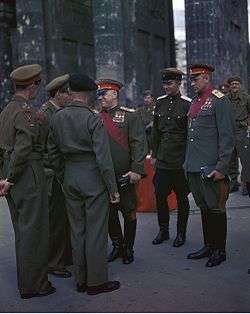
In total, during the existence of the USSR, the title of Hero of the Soviet Union was awarded to 12,777 people (without taking into account 72 ruled titles for defamatory acts and 13 canceled Decrees as unreasonable), including twice – 154 (9 posthumously), three times – 3 and four – 2. Ninety-five women were awarded the title. Among the Heroes of the Soviet Union, 44 people are citizens of foreign states. The great majority of them received it during World War II (11,635 Heroes of the Soviet Union, 101 twice Heroes, three thrice Heroes, and two four-time Heroes). Eighty-five people (28 of them were awarded this high rank posthumously) were awarded the title for actions related to the Soviet-Afghan War, which lasted from 1979 until 1989.[6]
The first recipients of the award were the pilots Anatoly Liapidevsky (certificate number one), Sigizmund Levanevsky, Vasily Molokov, Mavriky Slepnyov, Nikolai Kamanin, Ivan Doronin, and Mikhail Vodopianov, who participated in the successful aerial search and rescue of the crew of the steamship Cheliuskin, which sank in Arctic waters, crushed by ice fields, on February 13, 1934. Valentina Grizodubova, a female pilot, was the first woman to become a Hero of the Soviet Union (November 2, 1938)[7] for her international women's record for a straight-line distance flight. Zoya Kosmodemyanskaya, a Soviet partisan, was the first woman to become a Hero of the Soviet Union during World War II (February 16, 1942), posthumously.
In addition, 101 people received the award twice. A second Hero title, either Hero of the Soviet Union or Hero of Socialist Labour entitled the recipient to have a bronze bust of his or her likeness with a commemorative inscription erected in his or her hometown.[8]
Two famous Soviet fighter pilots, Aleksandr Pokryshkin and Ivan Kozhedub were three times Heroes of the Soviet Union. A third award entitled the recipient to have his/her bronze bust erected on a columnar pedestal in Moscow, near the Palace of the Soviets, but the Palace was never built.
After his release from serving a 20-year sentence in a Mexican prison for the assassination of Leon Trotsky, Ramon Mercader moved to the Soviet Union in 1961 and was awarded the Hero of the Soviet Union medal from KGB head Alexander Shelepin.
The only individuals to receive the title four times were Marshal Georgy Zhukov and Leonid Brezhnev. The original statute of the Hero of the Soviet Union, however, did not provide for a fourth title; its provisions allowed for a maximum of three awards regardless of later deeds. Both Zhukov and Brezhnev received their fourth titles under controversial circumstances contrary to the statute, which remained largely unchanged until the award was abolished in 1991. Zhukov was awarded a fourth time "for his large accomplishments" on the occasion of his 60th birthday on December 1, 1956. There is some speculation that Zhukov's fourth Hero medal was for his participation in the arrest of Beria in 1953, but this was not entered in the records. Brezhnev's four awards further eroded the prestige of the award because they were all birthday gifts, on the occasions of his 60th, 70th, 72nd and 75th birthdays. Such practices halted in 1988 due to a decision of the Supreme Soviet of the USSR, which formally ended it.
By the 1970s, the award had been somewhat devalued. Important political and military persons had been awarded it on the occasions of their anniversaries rather than for any immediate heroic activity.
All Soviet cosmonauts, starting from Yuri Gagarin, as well as foreign citizens who participated in the Soviet space program as cosmonauts, received Hero award for each flight (but no more than twice).
Apart from individuals, the title was also awarded to twelve cities (Hero City) as well as the fortress of Brest (Hero-Fortress) for collective heroism during the War.
The last recipient of the title "Hero of the Soviet Union" was a Soviet diver, Captain of the 3rd rank Leonid Mikhailovich Solodkov on December 24, 1991 for his leadership and participation in a series of unprecedented extreme depth diving experiments.[9] Following the collapse of the Soviet Union, this title was succeeded in Russia by the title "Hero of the Russian Federation", in Ukraine by "Hero of Ukraine" and in Belarus by "Hero of Belarus". Azerbaijan's successor order is that of National Hero of Azerbaijan and Armenia's own hero medal is that of National Hero of Armenia, both modeled on the Soviet one.
Heraldry
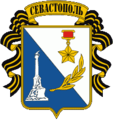 Coat of arms of the Hero-City of Sevastopol
Coat of arms of the Hero-City of Sevastopol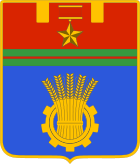

 Flag of the Hero-City of Tula
Flag of the Hero-City of Tula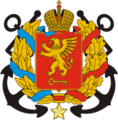
Philately
.jpg)
.jpg)
.jpg) Hero of the Soviet Union Lieutenant Alexander Kosmodem'yanskii
Hero of the Soviet Union Lieutenant Alexander Kosmodem'yanskii.jpg) Twice Hero of the Soviet Union Sergey Ivanovich Gritsevets
Twice Hero of the Soviet Union Sergey Ivanovich Gritsevets Hero of the Soviet Union Alexander Matrosov
Hero of the Soviet Union Alexander Matrosov Hero of the Soviet Union Lyudmila Pavlichenko
Hero of the Soviet Union Lyudmila Pavlichenko
Notable recipients

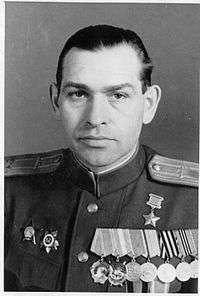
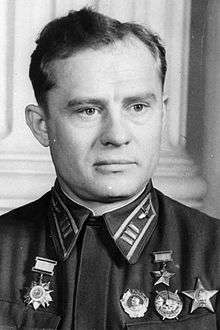
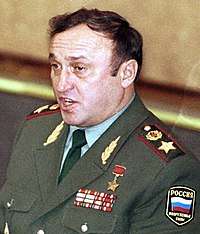

Single award
- Aleksandr Sergeyevich Senatorov
- Alexander Marinesko – the most successful Soviet submarine commander in terms of gross register tonnage (GRT) sunk, with 42,000 GRT to his name - awarded posthumously.
- Alexander Matrosov posthumously awarded for blocking an enemy machine-gun with his own body.
- Alexi Inauri – Chief of Georgian KGB.
- Aliya Moldagulova – posthumously awarded for leading her brigade and dying by gunshot.
- Andrei Durnovtsev – pilot who dropped the Tsar Bomba
- Anna Yegorova – World War II ground-attack Il-2 pilot.
- Arnold Meri – decorated World War II (1941).
- Boris Yegorov – First physician in space.
- Dmitry Loza – An Armor officer during World War II, he fought in the Vienna Offensive and in the Manchurian Strategic Offensive Operation - awarded for his leadership of a tank battalion in the Vienna Offensive.
- Dmitriy Ustinov – Marshal of the Soviet Union and Minister of Defense of the Soviet Union from 1976 until his death in 1984.
- Ekaterina Mikhailova-Demina – Saved hundreds of lives during World War II
- Endel Puusepp – Soviet World War II bomber pilot.
- Fyodor Okhlopkov – Yakut sniper during the Great Patriotic War. 2nd best sniper in the Soviet Union.
- Habibullah Huseynov – was Colonel of the Red Army and posthumously awarded the title of the Hero of Soviet Union.
- Hamazasp Babadzhanian – led a brigade in the retaking of the river Dniester during World War II.
- Ivan Golubets – saved lives aboard the Soviet ship SK-0121 in 1942.
- Ivan Isakov – Navy Admiral.
- Ivan Panfilov – Soviet general. Killed in action during the Battle of Moscow. The 8th Guards Rifle Division of the Red Army was named in his honor.
- Ivan Sidorenko – One of the top snipers of World War II, with over 500 kills. Was also a highly regarded sniper trainer.
- Israfil Mammadov – was an Azeri military commander and the assistant commander of a platoon commander of the Soviet 42nd Infantry Regiment during World War II.
- Joseph Stalin – General Secretary of the Communist Party (1922–1953) and Head of Government as Prime Minister of the USSR (1941–1953).
- Ivan Kharchenko – neutralized more than 50,000 explosive items during and after World War II
- Konstantin Krasavin – World War II flying ace
- Alexander Krivets – participant in the Soviet partisan movement during World War II, commander of the Shchors partisan detachment.
- Leen Kullman – Soviet spy (1965).
- Leonid Telyatnikov – Head of the fire department at the Chernobyl Nuclear Power Plant
- Lydia Litvyak – World War II fighter pilot and the world's top female ace, posthumously awarded.
- Lyubov Shevtsova – resisted Nazi occupation in World War II.
- Lyudmila Pavlichenko – Prolific female sniper in the Red Army's 25th Rifle Division, credited with 309 kills before retirement. She also became the first Soviet citizen to be received by a U.S. President when Franklin Roosevelt welcomed her at the White House.
- Mariya Borovichenko
- Mariya Oktyabrskaya – Female Tank commander integral to the success of the Battle of Kursk[10]
- Matvey Kuzmin – Led a Nazi division to an ambush in Malkino. He was 83 years old and is the oldest person awarded.
- Mehdi Huseynzade – an Azerbaijani guerrilla and scout during World War II.
- Michael Tsiselsky – Soviet naval pilot during World War II (1945).
- Mikhail Devyataev – escaped from a forced-labor camp at Peenemünde with crucial intelligence on German rocket programs.
- Mikhail Potapov – commander of artillery battery that destroyed 10 German tanks at the Battle of Kursk; killed in the battle.
- Natalya Meklin – Female Bomber pilot in Great Patriotic war. She completed 980 missions during the war as a Soviet Air Force officer.
- Nikolai Gerasimovich Kuznetsov – A Soviet naval officer and People's Commissar of State for the Navy during World War II. Also Commander in Chief and Flag Officer of the Soviet Navy, made Fleet Admiral in July 1945 and Fleet Admiral of the Soviet Union in July 1955 and again (posthumously) in 1988 due to his wartime and postwar roles in the Navy.
- Nikolai Kuznetsov – intelligence officer responsible for the kidnappings and assassinations of several high-ranking Nazis.
- Nikolay Pukhov – Colonel General in World War II and the first commander of the 8th Tank Army.
- Nikolai Melnik – Soviet pilot known for placing radiation sensors at the Chernobyl's Nuclear Power Plant, Reactor 4, during the 1986 explosion.
- Nina Onilova – woman machine-gunner killed in the Battle of Sevastopol in World War II.
- Noah Adamia – Soviet sniper credited with over 200 kills and two tanks knocked out during the Battle of Sevastopol; he trained over 80 snipers.
- Otto Schmidt – scientist and explorer of the Arctic.
- Oleg Babak – lieutenant of the 21st Brigade of the Ministry of Internal Affairs of USSR. He is the last hero of the Soviet Union.
- Pavel Grachev – Military Leader, division commander in Afghanistan, Minister of Defense of the Russian Federation.
- Pinkhus G. Turjan – during World War II he led the 269th battalion crossing of the Dnieper river.
- Pore Mosulishvili – Soviet Soldier and member of the Italian resistance.
- Pyotr Shirshov, Evgeny Fedorov, Ernst Krenkel and Ivan Papanin – Scientists who worked on the first drifting ice station.
- Rakesh Sharma – former Wing Commander Indian Air Force. Sharma was the first Indian national to travel in space.
- Richard Sorge – Soviet spy, reported from Japanese information the exact date that Operation Barbarossa would begin, and the fact that the Japanese would not attack Russia in 1941. This led Georgy Zhukov to move several Siberian divisions from the Far East to Moscow, contributing to the Soviet victory at the Moscow counteroffensive. Awarded posthumously.
- Sergei Anohkin – Soviet Test Pilot.[11]
- Valentina Tereshkova – cosmonaut and the first woman to fly in space.
- Valentin Kotyk – Youngest recipient (age 14). Posthumously awarded after being killed in combat during the Great Patriotic War
- Vasily Zaytsev – sniper who killed 225 at the Battle of Stalingrad; his achievements are dramatized in the film Enemy at the Gates.
- Vasilij Kvachantiradze – one of the top deadliest snipers of the Soviet Union alongside Sidorenko and Okhlopkov. Almost single-handedly halted a German assault.
- Viktor Kibenok – Firefighter during the Chernobyl disaster
- Viktor Zholudev – posthumously awarded for leadership during Operation Bagration
- Vladimir Konovalov – was a submarine commander; sank the German ship Goya.
- Vladimir Pravik – firefighter who died in the Chernobyl disaster.
- Yakov Pavlov – commanded the defenders of the building named after him during the Battle of Stalingrad.
- Yuri Gagarin – cosmonaut and the first human to fly in space.
- Zoya Kosmodemyanskaya – the first wartime female recipient (posthumously); demonstrated bravery during her capture and execution by the Nazis.
- Zhambyl Tulaev – soviet sniper, killed 313 German soldiers. He was an ethnic Buryat.
Two times awarded
- Aleksandr Ivanchenkov – Russian Cosmonaut
- Aleksandr Vasilevsky – Marshal of the Soviet Union and the Soviet Chief of the General Staff and Deputy Minister of State for Defense during World War II.
- Aleksei Leonov – cosmonaut who made the world's first spacewalk in 1965.
- Alexander Molodchy – famous World War II pilot of the Soviet Long Range Aviation.
- Amet-Han Sultan – World War II-era fighter and test pilot.
- Boris Safonov – World War II fighter ace and commander of the Soviet Naval Aviation 2nd Guards (2 GSAP-SF).
- Andrei Grechko – General, Marshal of the Soviet Union and Defense Minister
- Hazi Aslanov – Major General of armored troops during World War II; he participated in the 1944 Soviet offensives in Ukraine, Belarus and the Baltic countries.
- Issa Pliyev – military commander.
- Ivan Baghramian – military commander; he took part in the great 1944 Soviet offensive in Belarus and Lithuania (Operation Bagration).
- Ivan Konev – Marshal of the Soviet Union, commander of the First Ukrainian Front.
- Ivan Yakubovsky – tank commander during World War II. Made Marshal of the Soviet Union, First Deputy Minister of Defense, and Supreme Commander of the Warsaw Pact in 1967.
- Kliment Voroshilov – Marshal of the Soviet Union, awarded the honor twice, on his seventy fifth birthday in 1956, as well as in 1968 during the 50th anniversary of the Soviet Armed Forces.
- Konstantin Rokossovsky – Marshal of the Soviet Union, Commander of the First Belorussian Front, Marshal of Poland and Polish Minister of National Defense,[12] Deputy Minister of Defense and Commander of the Transcaucasian Military District, Chief Inspector of the Soviet Ministry of Defense.
- Mikhail Katukov – Marshal of the Soviet Union, 1st Guards Tank Army Commander.
- Nelson Stepanyan – World War II dive bomber pilot.
- Oleksiy Fedorov – organized underground resistance in Nazi-occupied Ukraine.
- Pavel Popovich – cosmonaut (Vostok 4 and Soyuz 14)[13]
- Rodion Malinovsky – Marshal of the Soviet Union, Soviet military commander in World War II and Defense Minister of the Soviet Union in the late 1950s and 1960s
- Semyon Timoshenko – military commander and senior professional officer of the Red Army, Marshal of the Soviet Union and People's Commissar of State for National Defense.
- Sergey Gritsevets – fighter pilot with 40 credited kills.
- Sydir Kovpak – partisan leader in Ukraine.
- Vasily Chuikov – A General responsible for the victory at Stalingrad and attacking Berlin. Made Marshal of the Soviet Union in 1955.
- Vasily Petrov – Guards Artillery Major during the second World War, for Dnepr crossing 1943 (No. 3504) where he lost both hands, and defense of an Oder bridgehead 1945 (No. 6091).
- Viktor Leonov – Soviet Naval Scout (Commando), fought in both European and Pacific Theatres in World War II.
- Vladimir Kokkinaki – Famous test pilot and record breaker.
- Vladimir Komarov – Pilot cosmonaut (Voskhod 1 and Soyuz 1)
- Vladimir Solovyov – Cosmonaut, former director of Mir and last man on Salyut 7.
- Ziya Bunyadov – Ziya Bunyadov was awarded the Soviet Union's highest military honor, the Hero of the Soviet Union, for his action in the battle over Pilitsa bridge in Poland on January 14, 1945, resulting in 100 enemy fatalities and 45 enemy prisoners taken. He received his second award while being in the Shtrafbat, a Soviet penal battalion.
Three times awarded
- Alexander Pokryshkin – World War II fighter pilot.
- Ivan Kozhedub – highly decorated World War II fighter pilot; he is considered the World War II Allied "Ace of Aces" with 62 victories, more than any other Allied pilot of the 1939-1945 war.[14]
- Semyon Budyonny – Military Commander, 1st Cavalry Army in the Civil War and later of the Army Cavalry Commands, also Marshal of the Soviet Union and from 1937 to 1940, Commanding Officer, Moscow Military District.
Four times awarded
- Georgy Zhukov — Military commander and politician credited with many of the most significant Soviet victories of World War II, Commander of the First Belorussian Front and Marshal of the Soviet Union.
- Leonid Brezhnev — First Secretary, later General Secretary, of the CPSU (1964–82), and Chairman of the Presidium of the Supreme Soviet of the USSR (1964–82), also awarded one Hero of Socialist Labour; this last feat was the subject of numerous Russian jokes. Also Marshal of the Soviet Union.
Foreign recipients (all single awards)
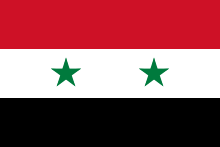

.svg.png)


.svg.png)
.svg.png)
.svg.png)
.svg.png)




















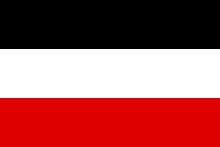




.svg.png)





.svg.png)
.svg.png)


See also
Notes
- ↑ Prokhorov, Aleksandr Mikhaĭlovich (1982). Great Soviet Encyclopedia, Volume 6. New York: Macmillan. p. 594. OCLC 810278.
- ↑ "Resolution of the Central Executive Committee of the Soviet Union of May 5, 1934" (in Russian). Wikisource. 2010-09-04. Retrieved 2012-02-20.
- ↑ "Decree of the Presidium of the Supreme Soviet of the USSR of August 1, 1939" (in Russian). Wikisource. 2011-09-28. Retrieved 2012-02-20.
- ↑ "Статистика :: Герои страны" [Statistics]. www.warheroes.ru (in Russian). Retrieved 2016-01-25.
- ↑ McDaniel and Schmitt, The Comprehensive Guide to Soviet Orders and Medals.
- ↑ "Archived copy". Archived from the original on 2008-02-13. Retrieved 2005-10-07.
- ↑ (in Russian) Гризодубова Валентина Степановна
- ↑ https://ru.wikisource.org/wiki/%D0%9F%D0%BE%D1%81%D1%82%D0%B0%D0%BD%D0%BE%D0%B2%D0%BB%D0%B5%D0%BD%D0%B8%D0%B5_%D0%A6%D0%98%D0%9A_%D0%A1%D0%A1%D0%A1%D0%A0_%D0%BE%D1%82_16.05.1934_%D0%93%D0%B5%D1%80%D0%BE%D0%B9_%D0%A1%D0%A1%D0%A1%D0%A0
- ↑ "As Leonid Solodkov was the last hero of the Soviet Union?". Retrieved 5 September 2015.
- ↑ "Mariya Oktyabrskaya (SU882)". Retrieved 5 September 2015.
- ↑ Hall, Rex; Shayler, David; Vis, Bert (2005). Russia's Cosmonauts: Inside the Yuri Gagarin Training Center. Chichester, UK: Praxis Publishing. pp. 333–4. ISBN 0-387-21894-7.
- ↑ Rokossovsky held Polish citizenship while serving as Polish Defense Minister. This would technically make him the only "foreign citizen" to hold multiple titles of Hero of the Soviet Union, but he was awarded the titles while a Soviet citizen.
- ↑ "Pavel Romanovich Popovich" (in Russian). Space Encyclopedia ASTROnote. 11 June 2009. Retrieved 2009-09-30.
- ↑ List of World War II air aces
- ↑ "Герой Советского Союза Горанов Волкан Семёнович :: Герои страны". Retrieved 5 September 2015.
- ↑ "Шменкель (Shmenkel) Фриц Пауль". www.warheroes.ru. Retrieved 2016-01-25.
- ↑ "Джибелли Примо Анжелович". www.warheroes.ru. Retrieved 2016-01-25.
External links
| Wikimedia Commons has media related to Hero of the Soviet Union. |
- Website dedicated to Heroes of the Soviet Union and Russia (in Russian)
- Hero of the Soviet Union - an article on the title (in Russian)
- Alley of Heroes of the Soviet Union in Volgograd - history and photos (in Russian)
- Legal Library of the USSR (in Russian)
